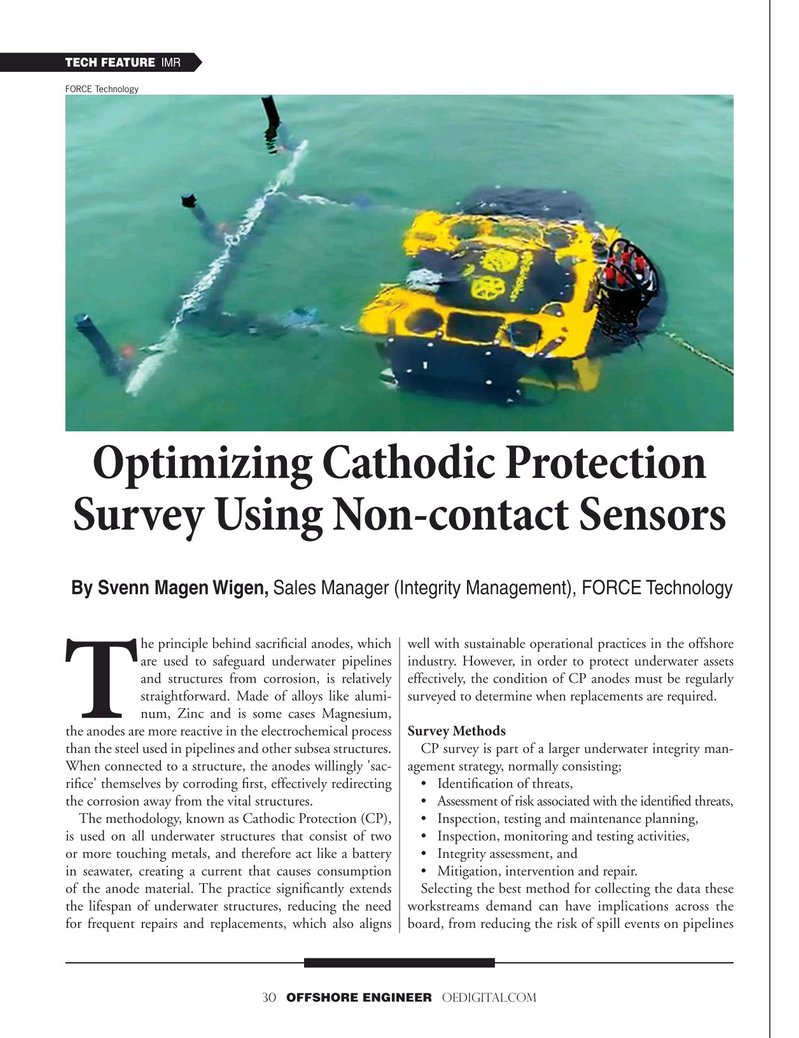
Page 30: of Offshore Engineer Magazine (Mar/Apr 2024)
Read this page in Pdf, Flash or Html5 edition of Mar/Apr 2024 Offshore Engineer Magazine
TECH FEATURE IMR
FORCE Technology
Optimizing Cathodic Protection
Survey Using Non-contact Sensors By Svenn Magen Wigen, Sales Manager (Integrity Management), FORCE Technology he principle behind sacrifcial anodes, which well with sustainable operational practices in the offshore are used to safeguard underwater pipelines industry. However, in order to protect underwater assets and structures from corrosion, is relatively effectively, the condition of CP anodes must be regularly straightforward. Made of alloys like alumi- surveyed to determine when replacements are required. num, Zinc and is some cases Magnesium,
T the anodes are more reactive in the electrochemical process Survey Methods than the steel used in pipelines and other subsea structures. CP survey is part of a larger underwater integrity man-
When connected to a structure, the anodes willingly 'sac- agement strategy, normally consisting; rifce' themselves by corroding frst, effectively redirecting • Identifcation of threats, the corrosion away from the vital structures. • Assessment of risk associated with the identifed threats,
The methodology, known as Cathodic Protection (CP), • Inspection, testing and maintenance planning, is used on all underwater structures that consist of two • Inspection, monitoring and testing activities, or more touching metals, and therefore act like a battery • Integrity assessment, and in seawater, creating a current that causes consumption • Mitigation, intervention and repair.
of the anode material. The practice signifcantly extends Selecting the best method for collecting the data these the lifespan of underwater structures, reducing the need workstreams demand can have implications across the for frequent repairs and replacements, which also aligns board, from reducing the risk of spill events on pipelines 30 OFFSHORE ENGINEER OEDIGITAL.COM

 29
29

 31
31